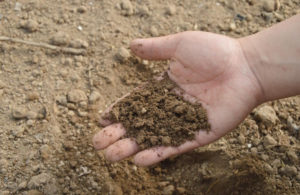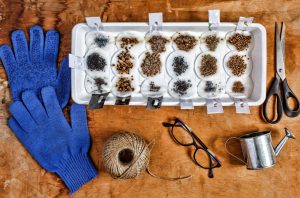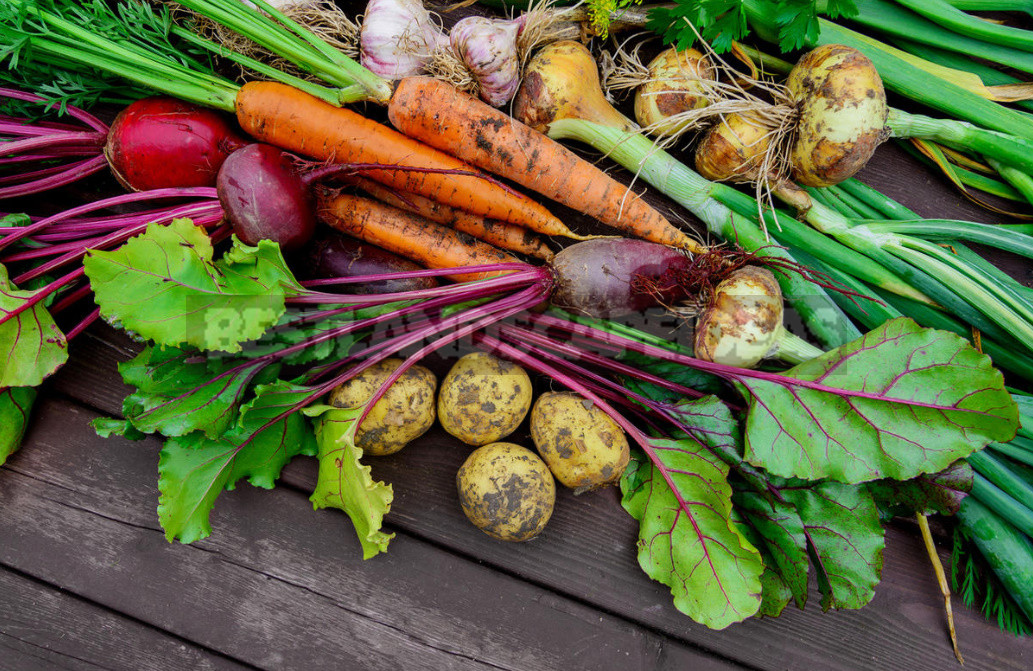
The conditions for storing the crop are all different: some have a spacious, deep and dry cellar (we will not envy these lucky ones), others have a small basement under the floor, others store everything that they have grown in a city apartment and on the loggia. But we have found tried and tested ways of winter storage of vegetables.
Potatoes before laying
Before laying for storage, wash the roots and potatoes, hold for 10 minutes in a pink solution of potassium permanganate, then dry in air. Potatoes before packing in boxes likes to lie in a dry dark place at positive temperatures for 10 days.
Preparing carrots for storage
Carrots need to collect after the first frost, that it took place in the soil the stage of natural cooling. If autumn is warm and you can not wait any longer, the harvested roots should be kept in the refrigerator for at least a day. If this is not done, they will continue to grow, quickly wither, even if you cut the top.
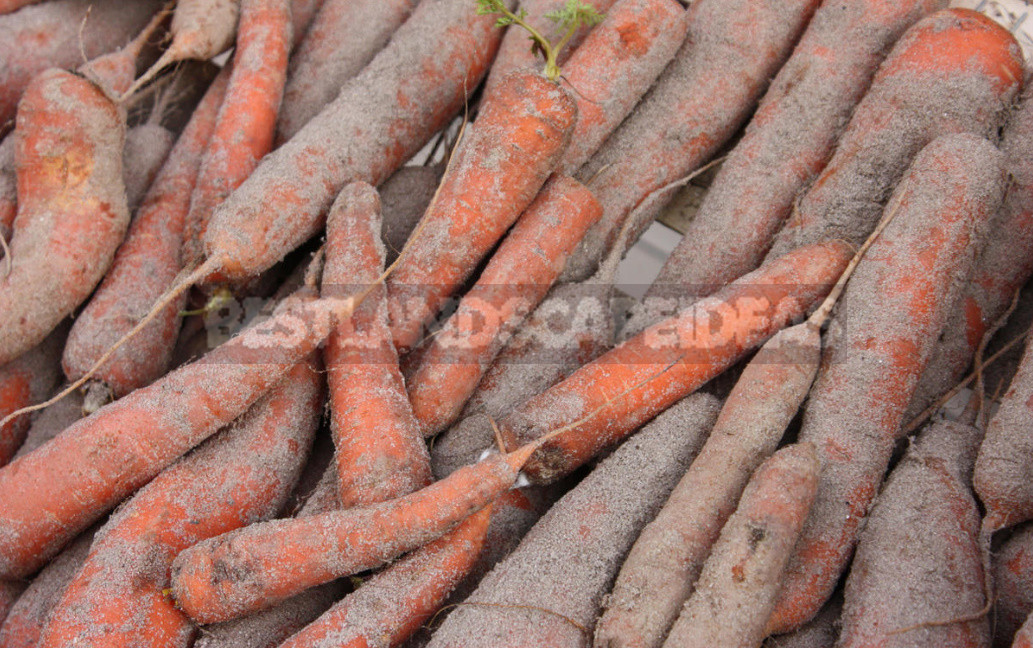
Before laying for storage carrots recommend powdered with chalk and stored in boxes, sprinkled with dry sand. You can do without dusting and to keep the carrots without any treatments in the sphagnum moss.
Horizontal storage of concrete rings
The easiest and most reliable way to store vegetables-in the cellar. But it can be dug only on those soils where the water table is below 1.5 m, otherwise the cellar will fill with water. Where the water table is above 1 m, it is possible to make a horizontal storage of two concrete rings planted on cement at the junction. One bottom of such concrete cylinder completely fill in with a cement solution, in another leave a square hole for a door-manhole.
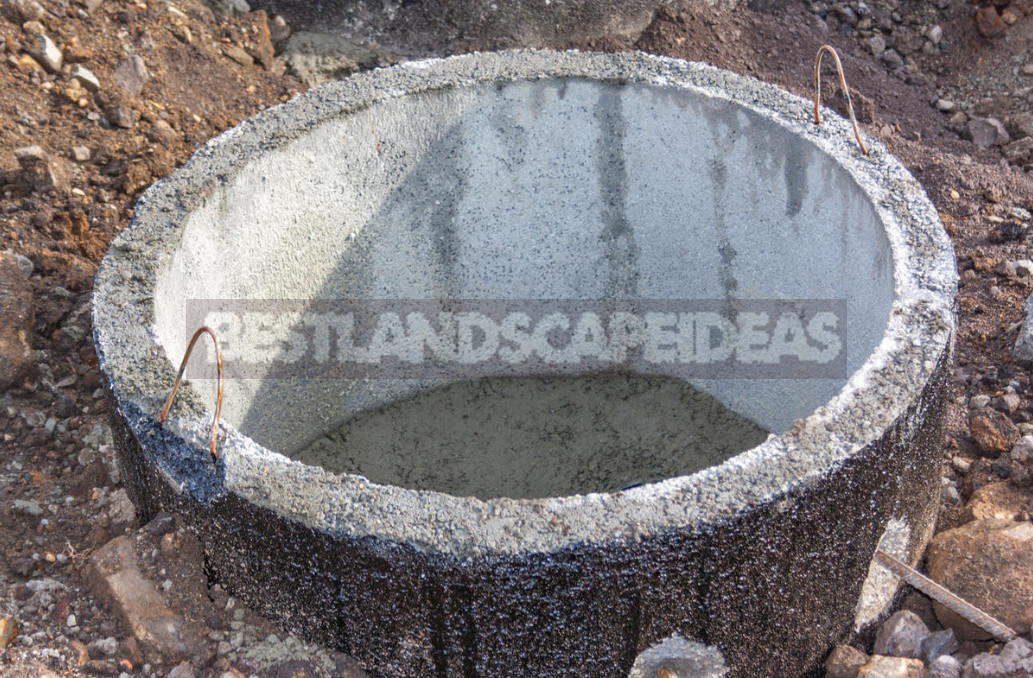
The cylinder is wrapped with roofing material and covered with soil. The soil layer above the top surface of the cylinder should be at least 30-40 cm.through the wooden door, it is necessary to hold a metal tube through which the air necessary for breathing vegetables will flow into the storage. Otherwise, they will suffocate and rot.
Inside it is necessary to lay a wooden floor, and at the end to make a couple of shelves for storage cans. Fall on the floor give each other boxes of potatoes and vegetables. From above it is necessary to cover with a layer of dry hay, you should also stuff the hay in front of the door. In the spring it can be used as biofuel in greenhouses and on beds (hay is brought into the trenches dug on a bayonet shovel, and then it is covered with soil with a layer of at least 15-20 cm). At this store, you can make a flower bed, planted strawberries, pumpkins or squash, sprinkling additional layer of 15-20 cm nutritive soil that is occupied by the storage place will not be lost in vain.
Barrel in the basement of the house
To avoid theft, the store can be equipped in the basement of the house, and the manhole disguise furniture. In the underground dig a hole at the bottom of which poured a layer of gravel for drainage. Put in a hole the big barrel without holes painted outside a layer of anticorrosive paint.

The space between the barrel and the pit is filled with gravel and sand, so that the barrel does not bulge when the soil freezes. The edge of the barrel must be above ground level, otherwise it can fill with groundwater.
Next you need to customize the cover and insert it into the narrow metal tube for breathing of vegetables. To prevent mice from gnawing through the lid, sprinkle Cynoglossum or Arctium lappa seeds over it, then insulate with hay. Put in a barrel can be layers of potatoes, beets, carrots, parsnips, celery roots, parsley, put banks with blanks.
Wintering on a bed
Part of the vegetables are left to winter right on the beds: parsnips and parsley, Jerusalem artichoke, celery and carrots, but the last two roots are additionally covered with a layer of peat or soil 12-15 cm high.potatoes can Winter in the soil, but in a place where it will not be flooded with water in the spring or during the winter thaws. For example, in the top layer of a compost heap if it from above to cover with a film, and potatoes to pour dry soil or peat.
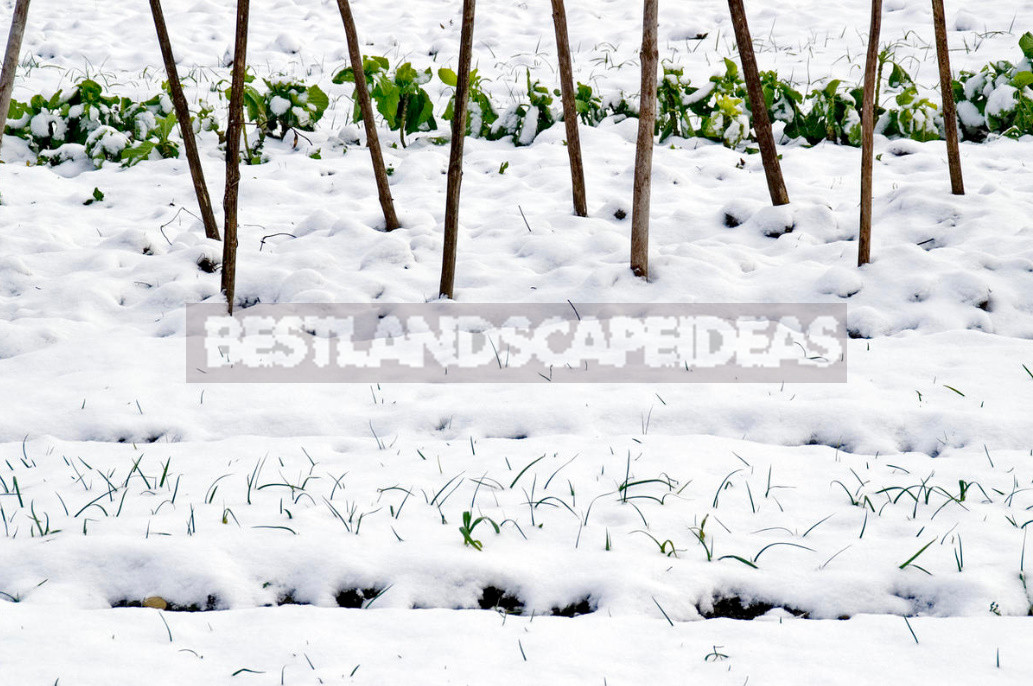
Put potatoes and vegetables falling asleep on top of them with dry earth or peat. It is necessary to cover with a film only the top of a heap, leaving its bottom part uncovered (for breath and airing). The height of the bulk of the Burt 50-60 cm on Top of the film laid spruce branches.
Store the harvest on the balcony or loggia
Those gardeners who have glazed loggias or balconies, can make boxes there, insulated with foam, and arrange an excellent storage right at home. That vegetables in such storage did not suffer, in the warmed boxes carry out light and include a hundred-watt lamp in severe frosts. Do not forget to insert a small tube-a hole for breathing.
Potatoes in the apartment
Those who do not have a loggia or balcony are in the worst position, but I know from my own experience that in the apartment you can store almost all winter bags of potatoes right in the hallway or in the kitchen near the outer wall. For storage it is better to use bags made of heavy paper.

Potatoes of early varieties should be used first, in October-November, because at the end of November it will begin to germinate in a warm room. Then use potatoes of average early grades with a longer period of rest. The potatoes with the longest dormancy period (usually of medium or late varieties) begin to germinate in the apartment only at the beginning of March, and they are the last to be used.
If sprouts appear on the tubers, they are immediately broken off, because they take out a large amount of nutrients and moisture from the potato (it shrivels and loses taste). In addition, in the area of the germ changes the tissue in the vegetable begins a biochemical process that makes it not only tasteless, but also harmful to health.
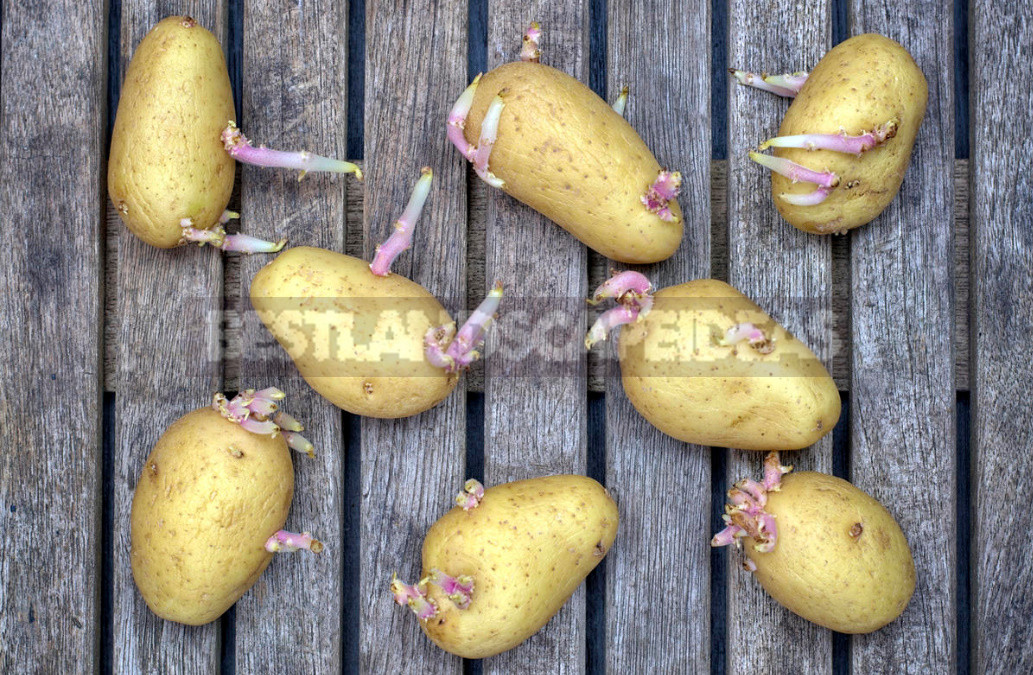
Old potatoes are unsuitable for eating in April, especially those that were stored in a warm room. Seed potatoes can also be stored in the apartment. In the fall after the treatment it is necessary to lay down in a five-liter glass jar, tie a cotton cloth and put it on the windowsill. Banks from time to time need to turn.


